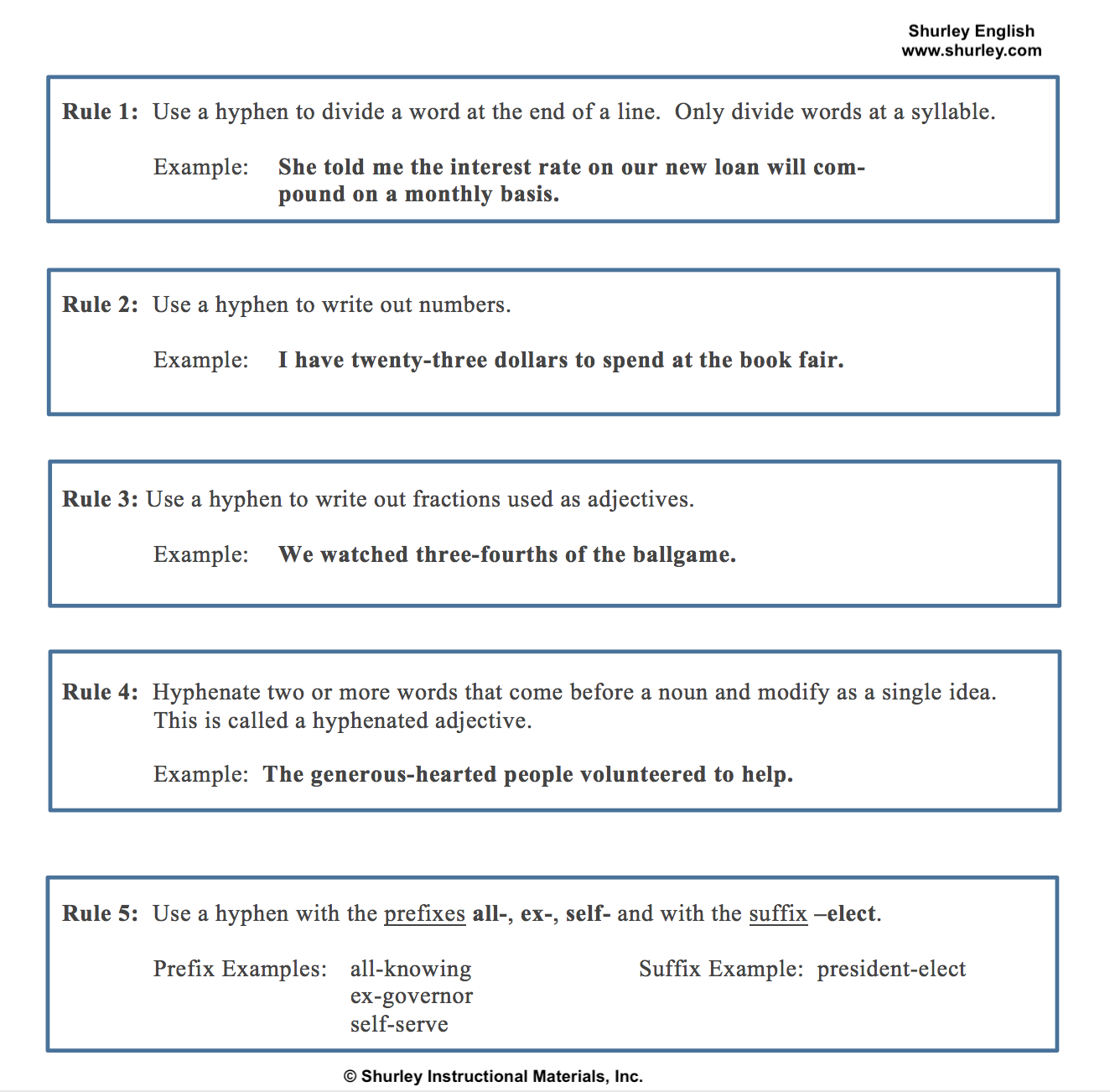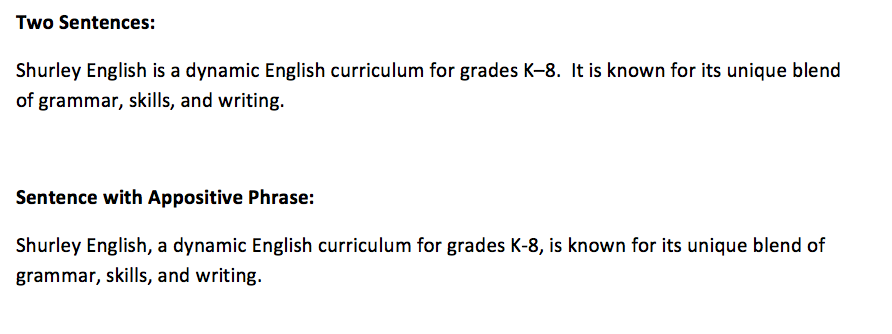How do I use the ellipsis?
/What is an ellipsis? When should you use the ellipsis in your writing? In today’s Two-Minute Tip, we explore several guidelines to help you with this specific punctuation mark. Take a look!
Read MoreWelcome to the Shurley English Blog! For the past thirty-five years, our mission at Shurley Instructional Materials has been simple. We do all we can to help teachers and students experience grammar and writing success. With that goal in mind, we wanted to create a space where our team of educators could share tips, tricks, and techniques to ignite learning. It’s all about educators helping educators on the Shurley English Blog. We invite you to join the conversation!
What is an ellipsis? When should you use the ellipsis in your writing? In today’s Two-Minute Tip, we explore several guidelines to help you with this specific punctuation mark. Take a look!
Read MorePunctuation matters; that’s a fact! Do you know the eight specific functions of the colon? If not, we invite you to take a look at this Shurley English Two-Minute Tip of the Day to learn more.
Read MoreI saw this sign one day at a place I frequently visit. (See image below.) I strive to use Standard English for published pieces, and I cringe just a little when I see improper English getting published this way. Maybe I am being too critical, but it is hard to ignore how informal, and just plain incorrect language, has wiggled its way into the formal arena.
Read MoreIf the Capitalization and Punctuation References are creating stress in your Shurley English classroom, let me offer you some relief. Shurley English students are not expected to memorize the rules in one grade level.
Some teachers assume that
Read More
One of my favorite strategies to teach writers is the effective use of appositives. I like to show kids how appositives, like prepositional phrases, can create a wonderful context for the sentence.
So, what’s wrong with adjectives?
Usually, with younger writers, we might simply encourage the use of strong adjectives to be placed in front of nouns, and the adjectives work just fine. But in order to help your slightly older kids to elevate their writing, teach them the artistry of appositives. We don’t want students to think that adjectives are the only tool in their Parts of Speech Tool Chest. There are other ways to modify nouns and pronouns. To help build an appreciation for selecting just the right way to say something, appositives are a good go-to.
A positive what?!?
Appositives are phrases that you set off with commas, and you usually position them just after the word you want described. The appositive is really just a renaming or modified version of the word it follows. Here is an example from one of the Mover and Shaker Sentence activities featured in Shurley English:

In this case, we have the direct object noun, Jackson’s Market. Notice that I have set the appositive off with a comma just before the phrase and right after it. Then, by strategically placing the appositive just after Jackson’s Market, I have modified the direct object without listing simple adjectives in front of it. It adds a bit of zing to the sentence, don’t you think?
Give it a try.
When your young writing scholar has scraped the bottom of the adjective bucket, it’s time to refill the bucket with some appositives. You can help writers get used to this strategy by brainstorming some basic nouns and appositive phrases that do a good job of modifying them. Keep your list of nouns and appositives handy by posting a Matching Wall of Words, specially designed to help writers find just the right appositive phrases to go with the noun of their choice. Over time, the use of appositives will become second nature. So, get out there and practice the skill of writing with appositives.

Knowing how to use punctuation marks correctly is important in any type of writing. As many of you know, it takes years of practice to apply punctuation rules like an expert. Recently, the proper use of a hyphen sparked my curiosity, and even though I’ve been using hyphens for years, I decided it was time to revisit the rules for using that “little line.”
A hyphen is a punctuation mark (-) that is used to form some compound words and adjectives. It is also used to connect the syllables of a word that has been divided at the end of a line. The rules for using a hyphen are straightforward, but a writer can choose to add them for clarity if necessary. Let’s take a look at the rules!

Whether you’ve tried to use a hyphen in your writing or completely avoided them like so many do, now that you know the rules, you can try adding them once in a while. The use of hyphens can add voice and personality to your writing! So, go have some fun experimenting with hyphens!

Appositives don’t have to be complicated. You just need to know (a) what they are, (b) how to punctuate them properly, and (c) how to use them to your advantage. When you understand these three things, you can use them any time they’re necessary in a competent and confident way.
First of all, an appositive is a noun or pronoun placed after another noun or pronoun to identify, rename, or explain it. It’s always located in apposition because it’s placed next to the noun or certain pronouns that it serves to develop.

In the first example, the appositive is set off by commas to indicate that the appositive is not essential to the basic meaning of the sentence. If we drop the appositive, the meaning of the sentence will not change.
In the second example, the appositive is not set off by commas because it is necessary to define the noun that came before it. This appositive can’t be dropped from the sentence without taking away a huge part of the sentences’ meaning.
When an appositive has its own modifiers, it is called an appositive phrase. Like other appositives, the appositive phrase acts as an adjective because it is describing a noun or certain pronouns in a sentence.
Appositives can be used to your advantage when you’re writing. Not only are they useful in identifying, renaming, and explaining other words, appositives make it possible for you to put more words into one sentence.

I am a fairly laid-back person, but when it comes to the debate over the Oxford comma, I can get riled up! It’s so true; I can go from Ariel to Ursula in a matter of seconds when defending it! Unlike Ursula, I don’t want to take the writer’s “voice” away, but I do want to make sure students learn about proper punctuation and why things like the Oxford comma matter!
The Oxford comma (also known as the serial comma) is the comma used
Read MoreShurley English is the best English Language Arts curriculum available to public schools, private schools, and home educators.Shurley English is a rigorous curriculum that brings back student-teacher interaction, promotes higher-order thinking skills, and provides students with a successful base from which they can achieve mastery, retention, and enthusiasm for English.
Our mission is to inspire and empower ALL students to become competent, confident communicators by providing superior educational solutions and innovative teacher training tools. This will enable all students to positively impact their school, community, and future work environments.

www.shurley.com 800-566-2966
Copyright © 2017-2021 Shurley Instructional Materials, Inc.
All photos/images contained on this site are copyright protected by Shurley Instructional Materials, Inc. or Getty Images.